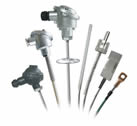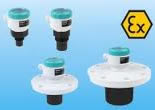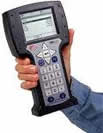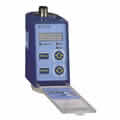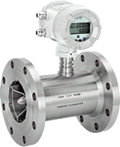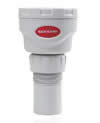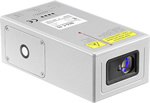DC Electrical Motor
DC electric motors operate using basic electromagnetic concepts in such a way that a classic DC motor consists of a page wire in the rotor and a permanent electric magnet in the stator, with a rotating switch called a commutator to direct the electric current in both. The load reverses to flow through the armature and absorb and repel the permanent magnet outside the motor. The speed of a DC motor depends on the set of voltage and current passing through the motor windings and the motor load or braking torque, so that the speed of the DC motor depends on the voltage and its torque depends on the current. Speed is usually controlled by variable voltage or current passing through the motor winding or by having a variable voltage source. Because this type of engine can produce high torque at low speeds, it is commonly used in traction applications such as locomotives.
In other models of DC motors, known as winding field motors, the permanent magnets on the outside (stator) of a DC motor are replaced by electric magnets. By changing the field current (winding on the electric magnet) we can change the motor speed / torque ratio. If the field winding is placed in series with the armature winding, we will have a low speed high torque motor and if it is placed in parallel, we will have a high speed low torque motor. We can reduce the field current to get even faster but with the same amount of torque. This technique is ideal for electric traction and many similar applications, and the application of this technique can lead to the elimination of the equipment of a mechanically variable gearbox.
Universal direct current motors used in devices such as mixers and power tools have the ability to work with direct or alternating current. Connected, the current changes simultaneously in both the field winding and the armature winding (and in the resulting magnetic fields), and therefore the mechanical force generated will always be unchanged. As a result, the motor must be specially designed to be compatible with AC current (impedance / reluctance must be considered), and the final motor will generally be less efficient than a pure DC equivalent motor. The advantage of universal motors is that AC power can be applied to motors that have the typical characteristics of DC motors, especially since these motors have very high starting torque and a very compact design at high speeds. The negative aspect of these motors is their maintenance and reliability problem, which is caused by the presence of commutators, and as a result, these motors are rarely seen in industry.
However, in classical design, there are several limitations, many of which are due to the need for brushes to connect to the commutator. Abrasion of the brushes and commutator creates friction, and the higher the engine speed, the harder the brushes must be pressed to make a good connection. Not only does this friction lead to engine noise, but it also places a higher limit on speed, which means that the brushes are eventually gone and need to be replaced. Incomplete electrical connection also generates electrical noise in the connected circuit. These problems are eliminated by moving the motor inside with the outside, by placing permanent magnets inside and the coils outside, we achieve a brushless design.
Advantages of DC motor:
DC motors have some advantages over AC motors:
Simple and understandable design
Ability to control the speed simply by changing the voltage
Ability to control torque simply by changing the current
Cheap and easy drive (SCR, PWM electronic power board)
As well as some
Disadvantages:
High cost of production and maintenance
Low reliability at low speeds
Large dimensions at high powers
- Popular products

German laser thermometer with external thermocouple K tool 1725

Level controller / roller blade switch for solids and powders, model 1872

Industrial Laser Thermometer Instrument 1727

12-channel temperature recorder thermocouple tool 1189


